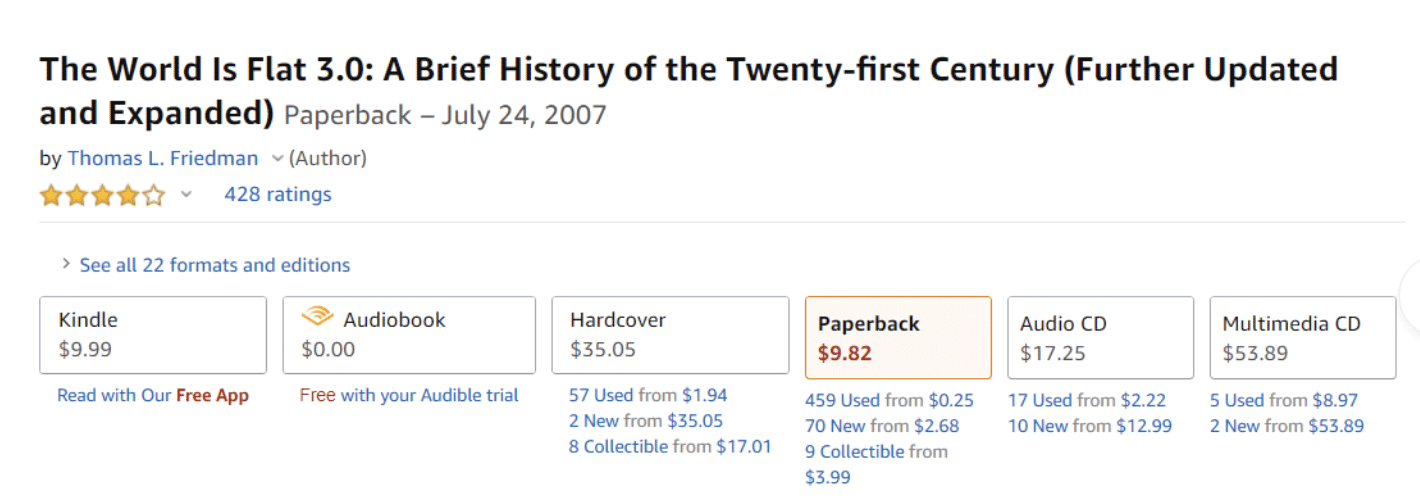![]()
As manufacturers are busy digitizing operations and processes, it can be beneficial to learn from those that have gone before down this road. There are numerous examples. One that comes to mind is the music industry’s digital transition from analog LPs to digital streaming music services. This industry now operates with a digital supply chain, distribution channel, and retail point of sale infrastructure. With this transformation has come a changing of the guard. Traditional manufacturers and supply chain providers can learn from history to better navigate this point of transition in their industry.
A Brief History of the Music Business
According to an article published by Spencer Stuart, the heyday of the music business was in 1999 when revenues totaled $27 billion. Here are a couple of data points to provide perspective:
- The most successful album was by Backstreet Boys and sold more than 20 million copies
- Singles made up just 4 percent of industry revenues
- 1999 was the year Napster made its debut
Fast forward to today, and we have a music business that generates half the revenue, at about $15 billion. Half of all revenue is attributed to digital, which surpasses every other industry’s percentage. For example, 14 percent of the book industry’s revenues are now attributed to digital products (which shocked me, given the multitude of e-book readers).
Brave New World
In contrast, the exposure musical artists have now achieved is spectacular, to put it mildly. Today’s top video of all time is a music video, “Luis Fonsi – Despacito featuring Daddy Yankee” has been watched 6.6 billion times as of the writing of this article! There are another 30 videos that have been watched over 2 billion times (source).
This type of exposure is nothing short of spectacular. The ability to find an audience across the world has never been easy, but it is at least easier today. This type of awareness was hard to even conceive 20 years ago. The reach of digital is far and wide, given the lack of constraints to share and watch on virtually any device, at any time, in any location. This is what happens with a digital transformation. Greater ease of use, sharing, and distribution. Those organizations that understand the end game are the ones who have the right vision to survive the change.
The Alliance Path
“Build vs. partner” is a decision most business owners or leadership teams must consider at one time or another. This decision must also be contemplated as part of your digital strategy.
There are many options when it comes to engaging in a digital marketplace. Tech giants offer manufacturers an easy path towards digitization. It could be as easy as just installing new software or logging into an account. A digital marketplace can provide instant access to all the capabilities of a digital platform without taking years to build it yourself, launch, and then promote.
Of course, the flip side of embracing this strategy is that you may soon have less connectivity with your customers or end users.
For example, the implementation of Augmented Reality (AR) systems provided via goggles or glasses can improve workflow execution or maintenance efficiency, further enhanced with the IIoT. Those in a role of inspecting machinery or capital assets can view an overlay of engineering As-Designed drawings, work instructions, or other intelligence to help in detecting potential problems or completing tasks. Advanced systems even offer a 3D view i.e., as the person moves around the machine, the AR system aligns physical and virtual images.
Some of the tech giants now provide these digital services via their own platforms – which is impressive. In exchange for these companies making such a sizable investment, your new partners will now be an embedded as part of your value chain.
What is the Right Direction?
By now I suspect you are thinking about what option or strategy is best? Compete with other digital marketplace providers directly by building your own as part of your digital transformation strategy, or perhaps is it better to partner with these providers instead?
Some sort of partnership or alliance strategy is likely in your future. As digital transformation takes hold, the world gets smaller, or “flatter.” In his book first published in 2005, The World Is Flat, Thomas Friedman reflected on a journey to Bangalore, India, when he realized globalization has changed global economic concepts.
Today, his story can be heard in many ways, various price points, and with shared recommendations from other readers (source):

In this case, Amazon is the marketplace Mr. Friedman decided to partner with. He worked with his supply chain to prepare and publish his book in hardback, paperback, audio book and Kindle formats. And, buyers can purchase it either as a brand-new product or from the secondary used market. In the end, his story can now be told to tens of millions of people across the world.
Deciding what is the “right” path for your digital transformation journey, manufacturers should first start with deciding what it is that you know and do best – and then focus on being the best you can be in those capabilities.
Regardless the choice you make, it is now necessary to put in the time, effort and resources to complete a digital transformation of your own operations first, to then be at par with the world’s other digital ecosystems. This option then empowers you to then be able to better evaluate future alliance partners, or to stay “solo.” Each option can deliver value. The key is to keep open your choices.
Read my next post, Create a Digital Ecosystem by Taking a Cue from the Tech Giants, to explore a little deeper as to what else should be considered in picking the best strategy digital alliance and ecosystem strategy – especially those operating in the Aerospace and Defense, Industrial Equipment, and other complex discrete industries.

